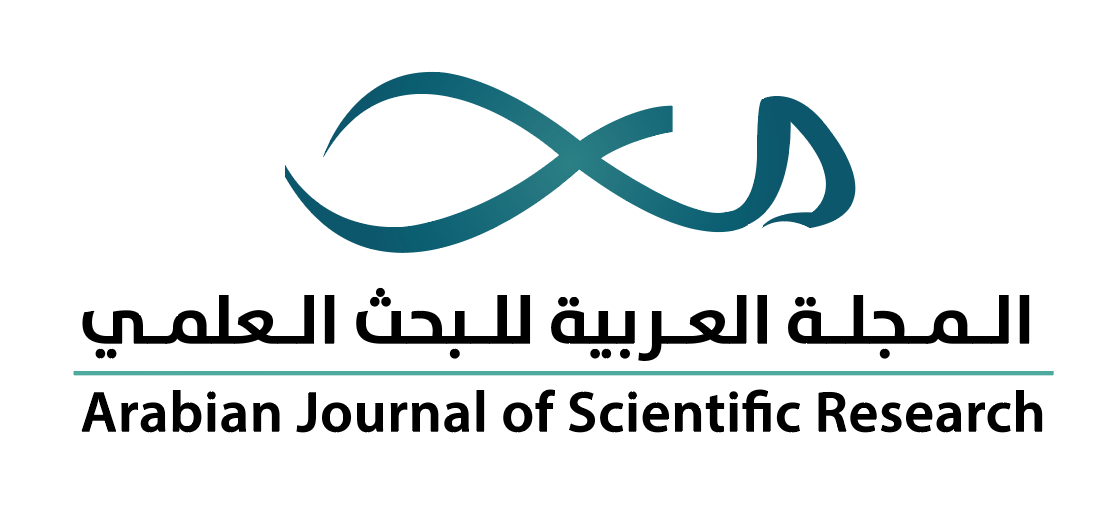-
oa تأثيرات مضاد الهستامين الدايفنهايدرامين في السمّية الحادة لمبيدات الحشرات الفوسفورية العضوية والكارباميتية لمختلف الدراسات على الحيوانات: تحليل ميتا
- Source: Arabian Journal of Scientific Research-المجلة العربية للبحث العلمي, Volume 4 (2023), Issue 1, Jun 2023, 1
-
- 09 July 2022
- 05 January 2023
- 30 April 2023
- Previous Article
- Table of Contents
- Next Article
Abstract
الملخص
لمضاد الهستامين-1 الدايفنهايدرامين صفات مواجهة المستقبلات الكولينية المسكرينية، مما يؤهله لأن يعمل مضاداً لتأثيرات مبيدات الحشرات الفوسفورية العضوية والكارباميتية المثبّطة لإنزيم الكولين إستيريز في الإنسان والحيوان. وفي ضوء المنشورات العلمية العديدة التي تُبين الفائدة النوعية للدايفنهايدرامين في علاج التسمم بهذه المبيدات، مع بعض الاختلاف في فاعلية الدواء الترياقي أو العلاجي، تهدف هذه المراجعة إلى حصر الدراسات التي تناولت تأثيرات الدايفنهايدرامين في السمّية الحادة للمبيدات، وعرض تحليل ميتا لبيان الدلالة الإحصائية من هذا الدواء الذي يُحسب مضاداً نوعياً إضافياً مع الترياق الأساس الأتروبين. استخدمنا طريقة بريسما بحسب عناصر التقارير المفضلة للمراجعات المنهجية، وتحليل ميتا لمؤشرات التسمم بالمبيدات الحشرية في الحيوانات التي شملت على حدوث الموت وعلامات التسمم ومرتبة التسمم. وجرى حصر الدراسات وبياناتها من قواعد المعلومات التي تُفهرِس المنشورات العلمية، فضلاً عن الفحص اليدوي للمنشورات من الجامعات. وفي تحليل ميتا، استخدمنا برنامج محلل ميتا الحر لمجموعتين، والذي شمل رسم الغابة وحجم التأثير وهو الخطورة النسبية، وتحليل التباين، فضلاً عن تحليل حجب مجموعة واحدة. كما طبَّقنا برنامج (Meta-Essentials) لرسم مخطط القمع الذي يشمل حجم التأثير والخطأ القياسي، واختبار إيغر لتقييم أيّ تحيز نشر ذي دلالة إحصائية، مع تحليل التقليم والملء للدراسات المفقودة. بلغ عدد الدراسات المختارة 13، واحتوت على 16 تقريراً مختلفاً لمؤشرات التسمم بالمبيدات وتأثير الدايفنهايدرامين فيها. وأظهرت نتائج تحليل ميتا لكل مؤشر من مؤشرات التسمم أن الدايفنهايدرامين قلّل معنوياً من الخطورة النسبية للمبيدات الفوسفورية العضوية أو الكارباميتية، حيث بلغت هذه النسبة مع 95% فاصل الثقة 0.375 (0.261، 0.54) لموت الحيوانات، و0.399 (0.283، 0.563) لعلامات التسمم، و0.466 (0.363، 0.597) لمرتبة التسمم. وتباينت النسب المئوية لأوزان التقارير الواردة في الدراسات ما بين 1.713 و20.245% لتحليل الموت، وبين 1.612 و23.062% لعلامات التسمم، وبين 4.566 و13% لمرتبة التسمم. وبيَّن تحليل حجب مجموعة واحدة عدم تأثر حجم التأثير لمؤشرات التسمم، إذ كانت القيم قريبة من حجم التأثير عند حذف قيمة أيّ تقرير من تقارير الدراسات المشمولة في التحليل. وقد ظهر اختلاف معنوي ذو دلالة إحصائية في تحليل التباين لبيانات مرتبة التسمم، في حين لم يكن التباين معنوياً لبيانات الموت وعلامات التسمم. وفي مخطط القمع، ظهر تحيّز النشر وبيَّن تحليل التقليم والملء احتمال وجود دراسات مفقودة. نستنتج من هذه المراجعة وتحليل ميتا أن للدايفنهايدرامين خاصية مضادة للتسمم بالمبيدات الحشرية المثبّطة لإنزيم الكولين إستيريز والتقليل من خطورتها النسبية ضمن مؤشرات التسمم، مع التأكيد أنه ليس بديلاً من الترياق الأساس الأتروبين.
The H1-antihistamine diphenhydramine possesses antimuscarinic-cholinoceptors properties, which enable it to act against cholinesterase inhibiting organophosphate and carbamate pesticides in humans and animals. Several reports on the use of diphenhydramine, in spite of some variations in its antidotal or therapeutic efficacy, specify beneficial effects of the drug in treating poisoning induced by these pesticides. Therefore, the purpose of the present review was to identify studies that encompass effects of diphenhydramine on the acute toxicity of pesticides with meta-analysis to demonstrate statistically the benefit of the drug which is considered as an additional antidote besides the standard one atropine. We used PRISMA and meta-analysis on the toxicity indices of pesticides in animals which were the occurrence of death, signs of poisoning and toxicity score. The studies were identified and then included in the review after searching data bases in addition to the manual search of publications at the universities. Two-group meta-analysis was conducted using software tools. Open-Meta Analyst was used for the forest plot, effect size of the relative risk, heterogeneity test and leave-one-group assessment, whereas Meta-Essentials Version 1.5 was used for the funnel plot that included effect size and standard error, with Egger’s test for the statistical publication bias and trim-and-fill analysis for missing points. Studies selected for analysis were 13, which comprised 16 reports on the effects of diphenhydramine on toxicity indices of the pesticides. Diphenhydramine statistically significantly reduced the relative risks of the organophosphate and carbamate pesticides, which were with their 95% confidence intervals: 0.375 (0.261, 0.54) for animal death, 0.399 (0.283, 0.563) for the signs of poisoning and 0.466 (0.363, 0.597) for the toxicity score. The % weight of the reports varied between 1.713% to 20.245% for death analysis, 1.612% to 23.062% for signs of poisoning and 4.566% to 13% for the toxicity score. The leave-one-group assessment of the reports indicated the effect size was not affected, as the values were close to the original one. A significant statistical heterogeneity was found related to the data of toxicity score but not related to the death and signs of poisoning data. Publication bias was identified by the funnel plot and the trim-and-fill assessment identified the missing points. We conclude from the present review and meta-analysis that diphenhydramine characteristically possesses effects against poisoning with cholinesterase inhibiting pesticides with a reduction of their relative risks within the toxicity indices. It is stressed that diphenhydramine should not be considered a substitute for the standard antidote atropine.


